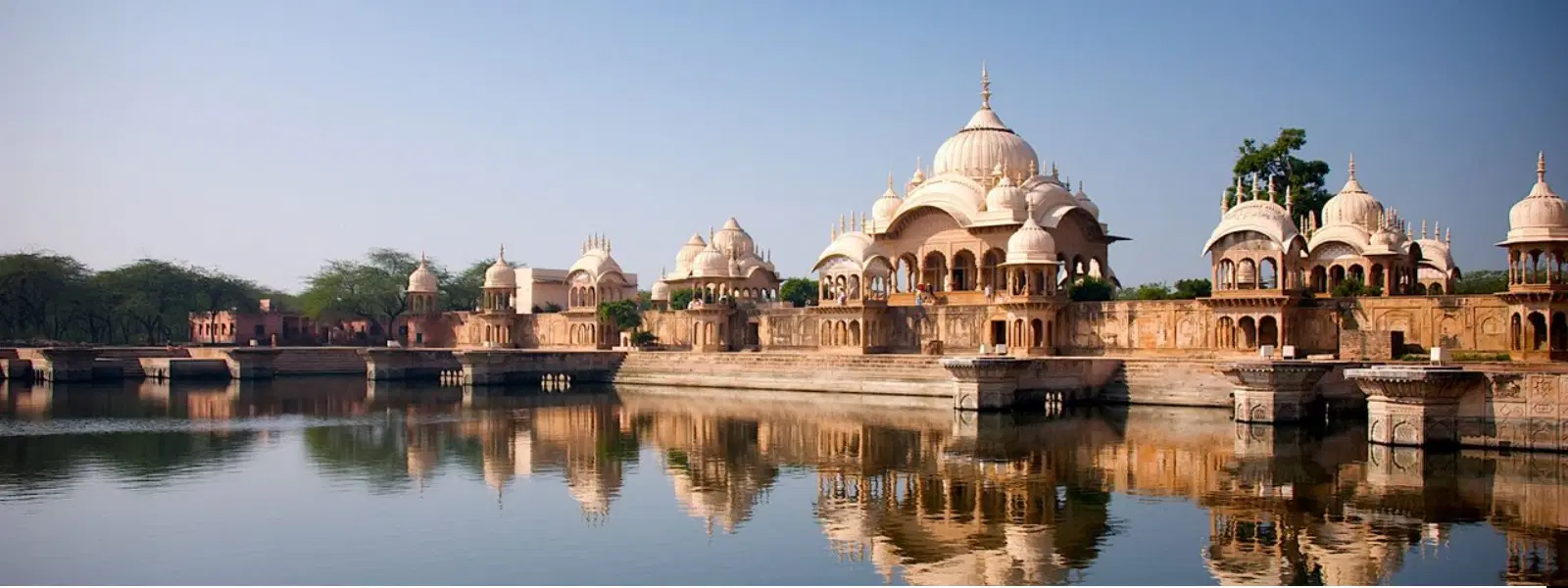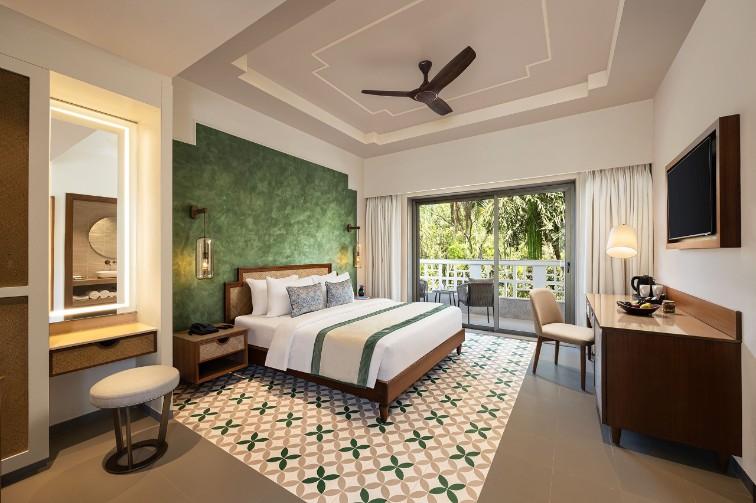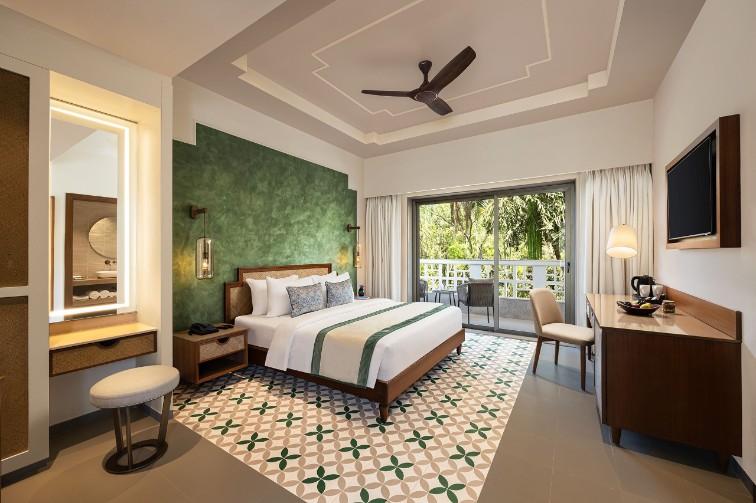
Hotels
•05 min read

Banke Bihari Temple in Vrindavan stands as a beacon of spirituality and devotion for millions of devotees. Its sacred aura and mesmerizing rituals make it one of India's most cherished temples. However, the timing of your visit can elevate the experience, ensuring that you immerse yourself in every divine moment. This guide sheds light on the best times to visit Banke Bihari Temple, offering insights to help you plan a visit that is peaceful, enriching, and logistically smooth.
Choosing the right time to visit a revered destination like Banke Bihari Temple is essential. Factors such as crowd levels, seasonal weather, and special events can dramatically affect the ambiance and your personal experience. When fewer people are present, the environment becomes more serene, allowing you to connect with your inner self and appreciate the divine energy of the temple. Additionally, prayer timings and the schedule of certain rituals are carefully observed, ensuring you do not miss out on spiritual highlights.
The temple follows a structured schedule with specific darshan slots in the morning, afternoon, and evening. While the exact timings may vary slightly during festival seasons or weekends, the general routine allows devotees to plan their visit strategically. For instance, on regular days, early morning darshan starts at a crisp hour, offering a calm and focused environment, while the evening sessions capture a vibrant spiritual energy.
Starting your day with an early morning visit is highly recommended. During these hours, the temple is less crowded, serene, and imbued with a sense of calm. Witnessing the first light of dawn illuminate the temple bells, you can engage in your prayers in an environment that feels almost meditative. The tranquility of the morning enhances the spiritual connection, making it an ideal time for a heartfelt darshan.
Weekday afternoons bring a quieter atmosphere to the temple, far removed from the hustle and bustle of peak touring hours. If your schedule permits, plan your visit during these midday hours to ensure a peaceful experience. You will find that the absence of the large crowds allows you to focus on reflection and meditation without distractions.
Winter is undoubtedly the best season to experience Vrindavan and its iconic temple. With cooler temperatures and a reduced influx of tourists, the winter months present a perfect scenario for a leisurely and reflective visit. The crisp air enhances your alertness, inviting you to relish the serene surroundings and divine ambiance without the discomfort of heat or humidity.
Visiting the temple during major festivals such as Janmashtami, Holi, or Radhashtami offers a culturally enriching experience. During these times, the temple becomes a hub of vibrant rituals, music, and dance. The celebrations elevate the spiritual fervor, allowing devotees to partake in traditions steeped in ancient lore. While the festive energy is contagious, be prepared for larger crowds during these auspicious moments.

For those who prefer an intimate connection with the divine, finding a lesser-known time to visit can be a golden opportunity. Off-peak weekdays, or even the immediate days following major festivals, tend to be quieter as the crowd subsides. These instances provide a rare chance to absorb the temple's spiritual energy without the distraction of throngs of visitors.
Although weekends are generally busier, planning strategically can help you make the most of these visits. Arriving early in the morning or later in the evening can help you bypass the midday rush. A well-planned weekend trip can allow you to participate in the vibrant atmosphere while still finding moments of quiet reflection.
The monsoon season brings a refreshing change to Vrindavan. Although the rains might limit some outdoor activities, they also infuse the region with a mystical charm. The droplets, the lush greenery, and the unique ambiance during these months offer a distinctive experience for devotees seeking a fresh perspective on their spiritual journey.
Vrindavan is well-connected by road from major cities like Delhi and Agra. You can opt for personal vehicles, hire a taxi, or use public transit options available from these cities. Traveling by car gives you the flexibility to explore the scenic routes and make spontaneous stops. Each mode of transportation has its advantages, ensuring that every devotee finds a convenient way to reach this divine abode.
Vrindavan offers a wide range of accommodation options for all budgets. From budget-friendly guesthouses to mid-range hotels and premium stays like Nidhivan Sarovar Portico, there are numerous places to rest your head after a day of spiritual exploration. These hotels not only offer comfort but also provide insights into local culture and hospitality, making your visit even more memorable.
Staying near Banke Bihari Temple ensures you are always just a stone's throw away from the heart of Vrindavan's spiritual essence. Many hotels and resorts in the vicinity pride themselves on their excellent amenities, including complimentary breakfast, guided tours, and serene garden spaces ideal for meditation. This proximity helps maximize your darshan time while offering the comfort and convenience needed for a holistic travel experience.
Seasonal changes in Vrindavan can significantly alter your experience. While winter remains the most comfortable time to visit due to the cool weather and fewer crowds, each season offers its own charm. The monsoon season, for instance, provides a refreshing ambiance, and summer, though warmer, can be ideal for those who enjoy vibrant cultural festivals.

For devotees who seek an enhanced experience, VIP darshan arrangements are available. These special passes allow you to bypass some of the usual wait times and enjoy a streamlined visit. It is advisable to inquire in advance with temple authorities or book exclusive packages provided by specialized travel guides.
Pro Tip from Tata Neu: Did you know that weekdays during the winter months are the ideal time for a peaceful darshan at Banke Bihari Temple? Plan your visit early in the morning for a truly divine experience.
The temple's calendar is dotted with a series of grand celebrations and festivals. Janmashtami, celebrating the birth of Lord Krishna, is one of the most significant events, where the entire temple complex bursts into life with devotional songs and dramatic re-enactments. Similarly, festivals like Holi and Radhashtami illuminate the temple with colors and lavish festivities, reflecting deep-rooted cultural traditions and religious fervor.
During festivals, expect larger gatherings and high energy levels. It is advised to plan your visit early in the day or late in the evening to avoid the peak rush. Prepare for the possibility of a long wait by carrying essentials like water and snacks. With the right planning, the vibrant energy and communal spirit of these celebrations can offer a unique window into the cultural heart of Vrindavan.
Banke Bihari Temple tends to be more crowded during festivals, weekends, and peak tourism seasons. Early mornings and weekday afternoons generally see fewer visitors.
VIP darshan arrangements can be made through authorized channels by contacting the temple administration or opting for dedicated travel packages.
Winter months from November to February are ideal due to the cooler weather and smaller crowds.
The usual darshan experience can take anywhere from 30 to 60 minutes depending on the crowd size and time of day.
Timing plays a crucial role in shaping the spiritual and practical experience at Banke Bihari Temple. From early morning darshans that offer a serene start to your day, to strategic weekend trips and the unique vibrancy of festival times, each moment provides its own set of blessings. Combining well-planned travel logistics, a range of comfortable accommodation options in Vrindavan, and insider tips on less crowded hours, you have the roadmap to an unforgettable visit. Embrace the divine journey by planning your trip during the ideal season, and let the sacred aura of Banke Bihari Temple guide your spiritual path.